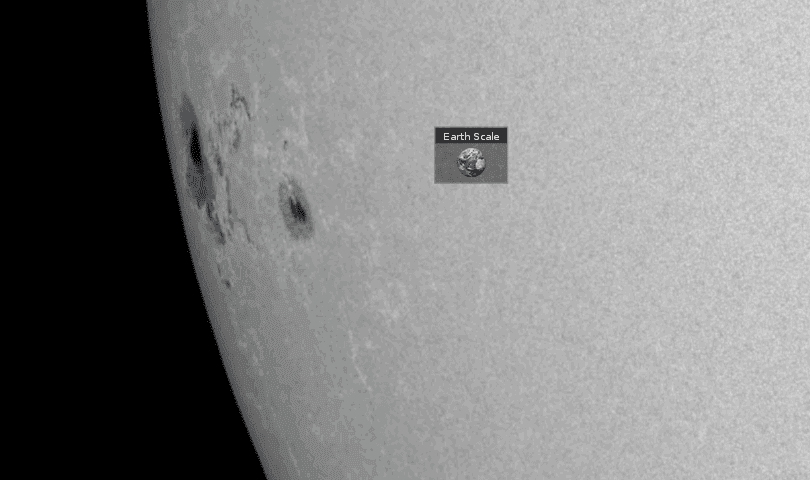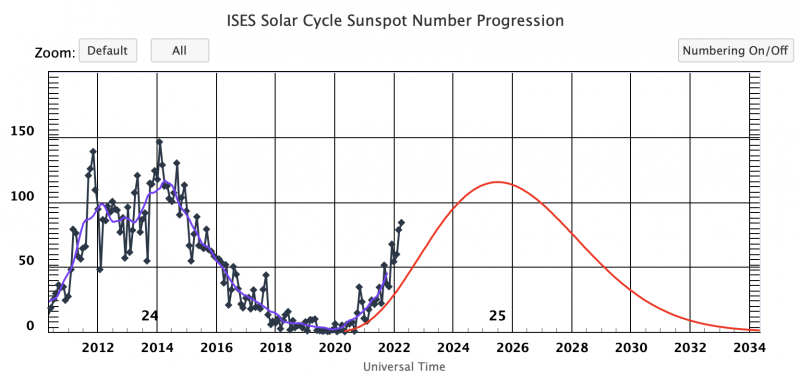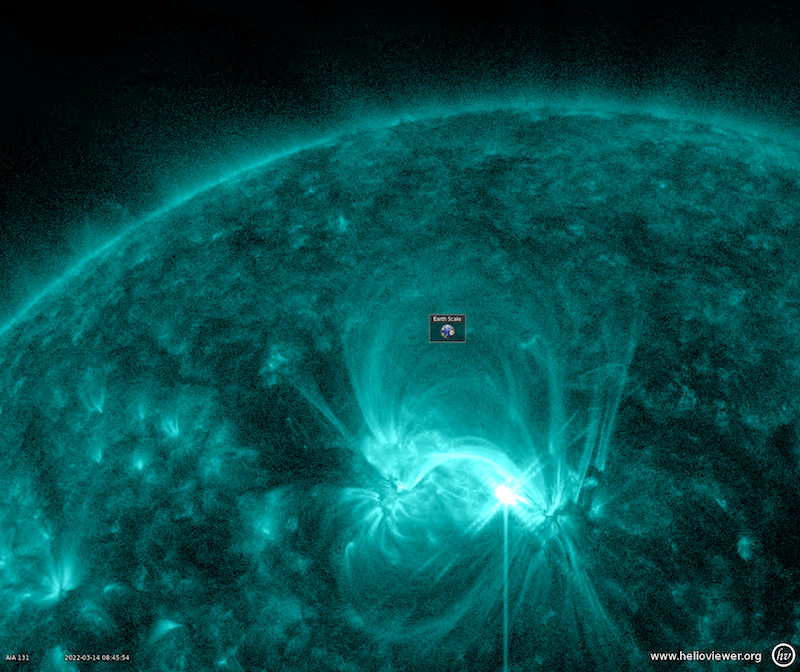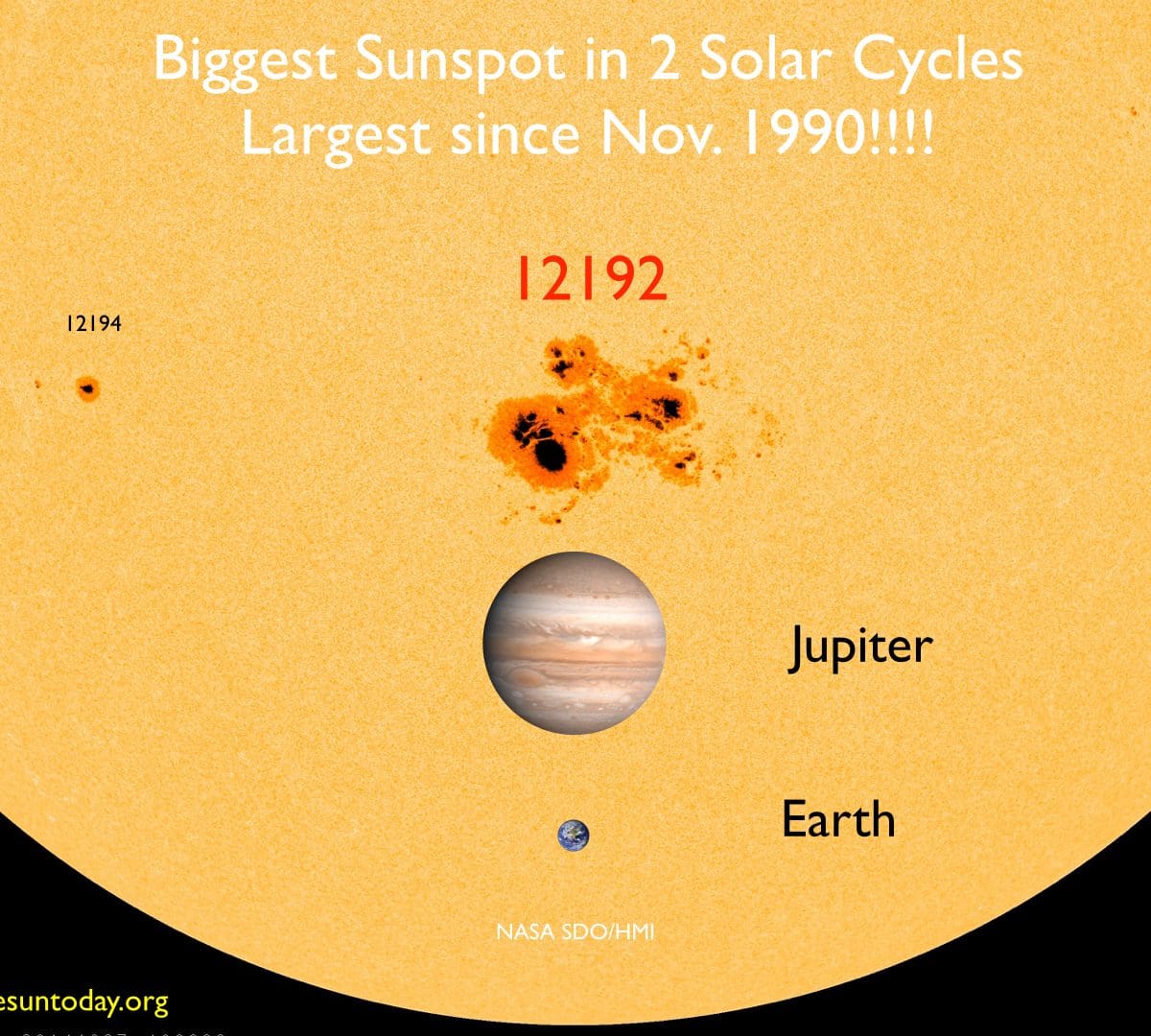
Sunspot group or active region AR11944 that gave us such a show at the beginning of the year is back. After taking its trip around the sun it has rotated onto the Earth facing solar disk and NOAA has labeled it AR11967.
The region during its earlier trip as AR11944 gave us an exciting show including fast CMEs, particle storms and an X flare. Yesterday, the new region produced several M-flares including an M4.9 flare that peaked in X-ray at 20:10 UT. As of about 14 UT, Jan. 28, 2014, the region produced 7 C-flares and 3 M-flares on 1/27/2014 along with 4 C-flares and 3 M-flares on 1/28/2014. One thing that is cool about this revisiting region is that it is part of a transequatorial system. This means that it is not a lone active region but it is connected to a region above it and the connecting loops cross over the equator.

The new region AR11967 is just south and to the left (on the solar limb) of the Earth scale image. The Earth image is roughly at the latitude of the solar equator. This makes the transequatorial loops from a region above the equator connecting to AR11967 below the equator more obvious.
We will have to wait for more information about the region’s structure once it rotates more into view. The image above shows that the region is smaller than during its last visit but it is still at least several Earths in size. We don’t yet know the region’s magnetic complexity again because not enough is visible but its steady low to mid-level flaring indicates that it has potential for even larger flares.
http://youtu.be/h8CV7ucaRwE
A quick look at the new region AR11967 formally known as AR11944. This video is rotated so that the left side or East limb of the sun is facing up. It shows the region and its transequatorial loops in composite SDO/AIA 304, 171 and 193 angstrom wavelength images. The video runs from 18:55 UT on Jan. 27, 2014 to 4:30 UT on Jan. 28, 2014. During that time the flares on 1/27 are C8.0(19:06), C5.3(20:15), M4.9(22:05) and on 1/28 are C7.6(00:31), C3.3(03:08), M1.5(04:02). The official start times in UT are in the parentheses. The plot at the top of the video shows the GOES X-ray measurements at the corresponding times of the SDO images.
Now we wait and see what AR11967 has in store for us.
credit: NASA/SDO/LMSAL/helioviewer.org/solarmonitor.org





